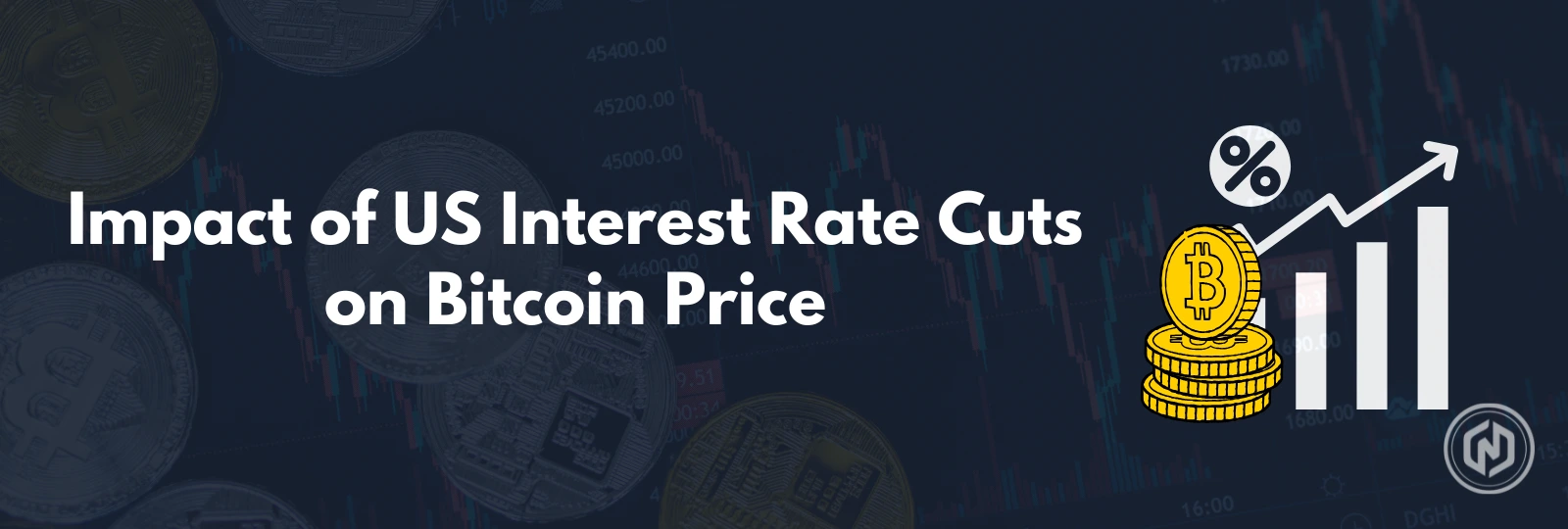Global markets, including cryptocurrencies like Bitcoin, are impacted by the US Federal Reserve’s major interest rate decisions. Depending on investor sentiment and the overall state of the crypto market, interest rate increases and decreases have varying effects on the Bitcoin market. Reduced US interest rates tend to boost market liquidity, encourage greater risk-taking, and raise demand for speculative assets like Bitcoin. But for Bitcoin investors throughout the world, November is a great month of opportunity since, according to recent surveys, the Fed is expected to implement an economic boost of a 25% rate cut once more, raising it from 4.75% to 4.5%. Some other impacts of interest rates on Bitcoin are provided in detail in the article.
How US Interest Rates Affect Bitcoin Price & Overall Market
How do US interest rate changes affect Bitcoin price & the overall market? Well, the detailed information regarding it is provided below.
What Happens During Rate Cuts?
One instrument of monetary policy US interest rates use to accomplish their objectives of low inflation, price stability, and sustained economic development is the federal funds rate. The money supply is impacted by the US interest rate changes in the federal funds rate, which start with banks and gradually trickle down to consumers. The US presidential election, the FOMC meeting amid cooling labor markets and reduced inflation, and a number of other international events will all have an important impact on how Bitcoin develops in the near and far future. Bitcoin price was at about $68,000 during October 2024, and there was a bullish feeling that pushed the price even further, possibly reaching all-time highs.
Why Rate Hikes Trigger Declines in Bitcoin Price?
The Fed’s move may have unexpected consequences for Bitcoin, which has traditionally profited from monetary relaxation. Particularly during periods of currency devaluation, Bitcoin flourishes as a substitute for fiat currencies. But the possibility of a more drastic 50 basis point decrease adds an element that market players might not be fully accounted for yet: increased fears of an imminent recession or slowdown in the economy. Although Bitcoin’s worth as a decentralized monetary network has not altered, market players may pull away from assets they consider risky.
Bitcoin’s Role as a Hedge Against Inflation
Failure to hedge with BTC price might cause institutional investors’ holdings in traditional equities, mutual funds, and other dollar-denominated investment vehicles to progressively lose value. A cryptocurrency investing plan that allocates 5% of the portfolio to Bitcoin will help against the US inflation period. It is believed that there are currently 18 million bitcoins in use. The total quantity of the coin will ultimately reach 21 million units. The built-in blockchain network of Bitcoin is used to validate each digitally minted Bitcoin. The underlying blockchain of Bitcoin is generally believed to be unbreakable, and it cannot be hacked. Many investors and institutions are adopting Bitcoin into their investment portfolios for this reason.
Other Factors Impacting Bitcoin’s Price
Only a small portion of the total amount of Bitcoin in circulation is represented by the total amount transacted on exchanges. Bitcoin isn’t constantly accessible for purchase because the majority of it is kept as savings. One factor that may impact the Bitcoin price is user acceptability. A currency’s value will decrease if there is little demand for it, while its popularity will cause prices to rise. The price of Bitcoin rises due to a decrease in supply and an increase in demand.
Because of the quick rise in popularity of cryptocurrencies like Bitcoin, regulators are arguing over what constitutes a digital asset. Bitcoin is classified as a commodity by the short-term US bonds and the US Commodity Futures Trading Commission (CFTC), while securities are classified as securities by the Securities and Exchange Commission (SEC). The coin loses value if the long-term US bonds are made too strict or harsh. They can, however, catalyze the cryptocurrency industry’s explosive expansion if they are in its best interests. In terms of market capitalization, Bitcoin is still the most valuable cryptocurrency, but its primary rivals are altcoins like – ETH, USDT, BNB, etc.
Mid-Term & Long-Term Impact on Bitcoin
Since the US interest rate cuts are meant to spur economic growth by making borrowing more affordable and attracting better returns in the cryptocurrency market, the US Federal Reserve’s latest 50 basis point interest rate drop will have a favorable short- and long-term impact on the market. The interest rate reduction will boost liquidity in the financial sector and draw in a greater number of investors in the future.
The market will want more as a result of the increased financial liquidity. Investing in various cryptocurrencies can help investors make more money. Long-term discussions will draw institutional investors and spur regulatory changes. More market legitimacy and stability are adopted by this atmosphere, which might eventually establish Bitcoin as a widely accepted asset as per the Bitcoin price prediction.
Conclusion
Bitcoin price trends are affected by several factors like market sentiment, investor behavior, regulatory frameworks, etc. However, macroeconomic changes like the U.S. interest cuts will have a direct effect on the price of Bitcoin. Depending upon its usage and strategies implemented by users, no matter the price, they will always end up having profit from their investments.

